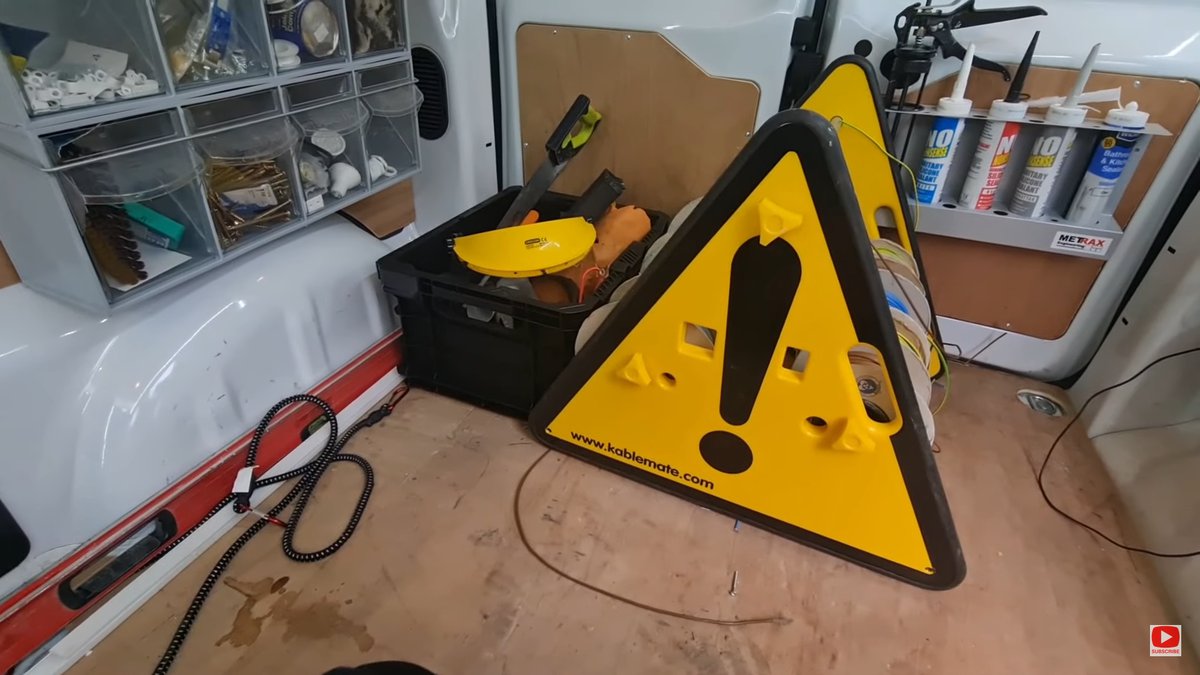Skin Your Van's Floor With Plywood
July 24, 2021

Factory work van floors are not ideal for working.
You may want to use a sheet of plywood to skin your floor for material access, damage control, and cleanliness.
Here's why.
You generally receive a van in one of two ways:
- With a bare metal floor.
- With a factory upfit kit that includes some level of floor protection and insulation (usually a rubber mat).
Both can be less than ideal depending on how you use your work van.
Adding a piece of sacrificial plywood flooring can substantially improve how you work and may make you feel better about some annoyances than other floor types.
Easy Cargo Sliding
If you transport large items related to your trade, like water heaters, AC condensers, cabinets, or sheets of drywall, you'll want a smooth surface on which these things can slide.
A bare metal floor is the least friendly of these options since it isn't perfectly flat. Besides the stiffening that creates ridges you may have screw heads that poke up from the floor. These can snag on cardboard boxes or the leading end of long items. This is not the end of the world, but this is a frustration you want to eliminate.
A rubber mat is generally fine for sliding objects as long as it smooths the underlying floor and doesn't have any tears.
Plywood floors have the least friction and obstruction of these options, so it'll be the easiest to load, unload, and shift cargo.
Save Your Paint
Friction and dirt will eventually wear and scratch your van's metal floor over time. This doesn't particularly look good and will negatively affect the resale value of your van.
A plywood floor in your van will preserve the paint and keep it from being dented. A rubber mat can do the same, but will be a little less durable than plywood. Rubber mats also tend to run the full length and width of your van, meaning that they can't be replaced easily, whereas a sacrificial layer of plywood can exist just in the cargo area of your van between the shelves.
If your work is oily or dirty, you can swap out your plywood whenever it's just too much to look at. Some tradespeople scrub and hose out their van, but you need to be careful about trapping rust-making water in the body or under a mat.
What About Your Knees?
If you have a van you can't stand in, maybe skip the plywood floor and go with a padded rubber mat, particularly if you work in a trade where you have lots of small parts like HVAC or plumbing.
If you're going to be on your knees on the floor of your van digging through part bin, you'll want some cushioning to be more comfortable and so that you can maneuver without pain.
How Much Does a Plywood Floor Weigh?
Having lots of plywood in your van will decrease the cargo weight capacity and affect your fuel mileage. Fortunately, a sacrificial plywood floor is a modification that doesn't add very much to the weight of your van.
A typical mid-length Ford Transit van has a floor length of 144". The wall-to-wall width is 70", but if you skin only the section between your shelves, you'll have a width of 35-40". We'll use hardwood plywood for these calculations, these are the weights for different thicknesses:
| Plywood thickness | 1/4″ | 1/2″ | 5/8″ | 3/4″ |
|---|---|---|---|---|
| Plywood weight at 70" wide | 53 lbs. | 99 lbs. | 117 lbs. | 148 lbs. |
| Plywood weight at 40" wide | 31 lbs. | 56 lbs. | 67 lbs. | 84 lbs. |
If you want to keep the floor of your van in good shape and make your big cargo easy to load, think about throwing down some plywood on the floor of your van.
Get work trucks and tips in your mailbox.
Your time is precious. We write about organization, tools, and techniques that make tradespeople work faster and more efficiently. Subscribe to get our articles and tips in your inbox.
We will not spam you.